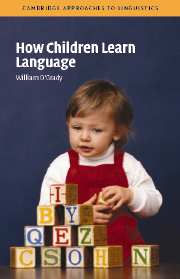Introduction
Among the many advantages that speech confers on humans is the ability to convey thoughts by inflecting and arranging words in particular ways. Explaining precisely how this is done has always been the first goal of language science. Progress has been uneven, of course, replete with false leads and dead ends, but various research priorities can be identified with some degree of confidence.
One such priority involves the phenomenon of alignment, which defines a fundamental divide in the morphosyntax of natural languages, as illustrated in Figure 13.1. Norman and Campbell (1978) describe the contrast as follows.
In nominative/accusative languages, subjects of transitives and subjects of intransitives are handled in the same way, while transitive objects are handled differently. In absolutive/ergative languages, transitive objects are accorded the same treatment as intransitive subjects, transitive subjects being handled differently. (Norman and Campbell 1978: 141)
The study of alignment lies at the heart of the field of typology, an area to which Lyle Campbell has made many important contributions, including a remarkable overview of South America's 108 language families (Campbell 2012). Indeed, Campbell was among the first scholars to posit an ergative system of syntax for proto-Mayan (Norman and Campbell 1978; Campbell and Kaufman 1985; Campbell 2016, 2017)—a view that is now universally accepted.
There are essentially two approaches to the typology of alignment. One body of work considers the phenomenon from a functional perspective, with reference to the classic notions of subject and direct object (e.g., Norman and Campbell 1978; Comrie 1981; Campbell and Kaufman 1985; Dixon 1994; Payne 1997; among many others). Another line of inquiry seeks to characterize alignment and its consequences in more abstract terms, usually within the framework of generative grammar (e.g., Aldridge 2008; Deal 2015; Polinsky 2017, and the many references cited there).
I seek here to break a third path by outlining an approach to alignment that draws on an emergentist explanatory framework, whose key elements will be laid out in abbreviated form in the next section. Sections 3 through 6 consider a series of phenomena (case marking, word order, agreement, and relativization) that help shed light on the nature of alignment and on the profound consequences that it has for a language's morphosyntax. The chapter ends with some brief concluding remarks.
